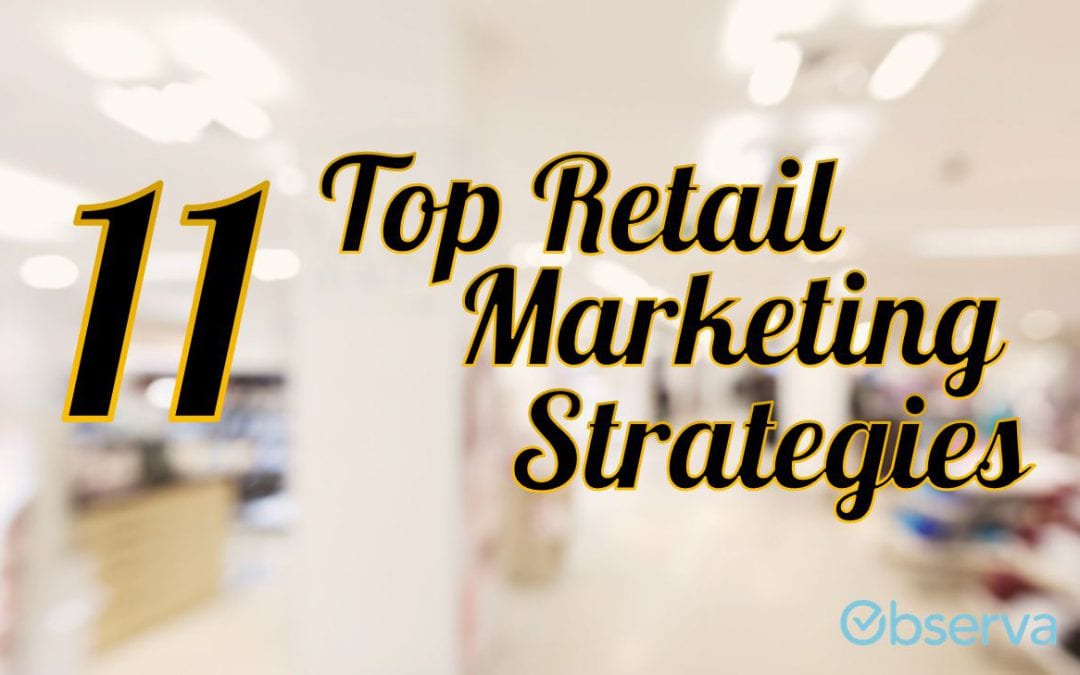by Emma Rhoads, Observa
After months of scavenging through endless brand success stories, we have officially discovered all the secrets to success for a new brand. We wrote these down with secret ink, coded them three different ways, and locked them away in our deepest vault.
However, because we greatly appreciate our loyal (and new!) readers, we’ve decided to divulge some of these top secrets to you. Implement these marketing strategies to maximize your ROI and watch your company’s revenue soar.
- Never stop researching, never stop innovating (the classic tip)
“If I had asked people what they wanted, they would have said faster horses.” Henry Ford’s famous quote inspires creators to make the product that consumers don’t know they need. The market for consumer goods changes every year, and a product must shift to meet these changes as needed.
Old Spice is a great example of adaptation. As an 81-year-old company, it was putting the “Old” in Old Spice, becoming synonymous with “grandpa smell” and missing out on younger consumers. To “spice” up its image, the company rebranded entirely and took aim at millennial men. This marketing strategy, led by its creative, viral commercials, resulted in great success and increased sales by 60%.
Marketing to new or better segments isn’t the only way to innovate. Innovation can appear in the distribution, product design, material sourcing, or other facets of the company. It’s important to understand who is buying your product and whether that aligns with the current offering.
- Know your audience, and listen
Consumers are your primary source of revenue, and they love giving feedback. If you receive online reviews, emails, or even good old-fashioned letters about the same issue, that’s an indication that something needs to change.
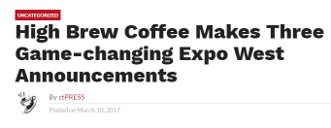 High Brew Coffee, an Austin-based ready-to-drink cold brew coffee company, used Stevia sweetener in its drinks until last year, when it switched to real cane sugar. It turns out that one-third of coffee consumers have an aversion to Stevia, so when High Brew made the decision to switch, it got a positive response.
High Brew Coffee, an Austin-based ready-to-drink cold brew coffee company, used Stevia sweetener in its drinks until last year, when it switched to real cane sugar. It turns out that one-third of coffee consumers have an aversion to Stevia, so when High Brew made the decision to switch, it got a positive response.
- Keep up with (or stay ahead of) trends
Every other week, there’s a new health craze. Whether people are concerned about aspartame, want collagen in their food, or are interested in “raw water,” keeping track of these trends goes a long way. It’s important to know the difference between a fad and an actual trend, but it can be difficult to determine which category any given craze falls into. A lot of it has to do with timing.
PepsiCo responded well to health trends. As public awareness of artificial sugar effects rose, the company decided to change its recipes and create new products focused on natural ingredients.The result? Total revenue jumped 5% in that quarter.
- Embrace local relevance
For smaller brands, being “local” can be the golden ticket to entering the competitive market. By embracing local channels, creating strong partnerships with other local companies, and positioning the product with a local story, a company can make consumers in that area want to support the business.
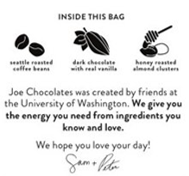 Seattle company Joe Chocolates embraced this strategy and reaped the rewards. It started distributing small by partnering with Seattle’s most popular local drugstore, Bartell Drugs. After Joe Chocolates was sold at 64 Bartell locations, the company established demand for its product and pitched to a larger Seattle-based national company, REI. Now, this small company’s product can be found in REI and Nordstrom (also Seattle-based!) stores across the US.
Seattle company Joe Chocolates embraced this strategy and reaped the rewards. It started distributing small by partnering with Seattle’s most popular local drugstore, Bartell Drugs. After Joe Chocolates was sold at 64 Bartell locations, the company established demand for its product and pitched to a larger Seattle-based national company, REI. Now, this small company’s product can be found in REI and Nordstrom (also Seattle-based!) stores across the US.
- Market to influencers
Instagram: it’s not just for kids. A significant portion of consumers follow some type of influencer, from celebrities to mom bloggers, on social media. By sending free products to influencers or just partnering with the right people, brands can generate greater public awareness and increase the likelihood of first-time buyers.
According to a study done by Tomoson, a influencer & micro-influencer software provider, businesses make $6.50 for every $1 spent on influencer marketing. Because influencers have emerged as the fastest-growing customer acquisition channel, 59% of marketers are planning to increase their budget for this strategy.
- Develop online awareness
The web provides some of the best venues to connect and educate consumers, generating brand awareness when executed correctly. This is where true innovation needs to shine, as the competition to compete for space and attention is steep.
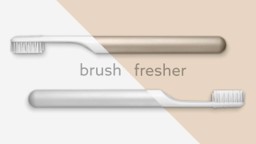 A personal favorite success story is an approach that Quip mastered. (Disclaimer: A couple of us on the Observa team bought into it and now own the product ourselves. Not a sponsor.) Quip took a simple product, an electric toothbrush, and updated it for millennials. We were scrolling through Instagram and the advertisement for Quip popped up. It was one of the few advertisements that any of us have ever clicked on. So how did Quip do it? The company understood its target market and then integrated ads perfectly into its Instagram feeds. The simple, beautiful designs drew attention but not in a blatant or disruptive way.
A personal favorite success story is an approach that Quip mastered. (Disclaimer: A couple of us on the Observa team bought into it and now own the product ourselves. Not a sponsor.) Quip took a simple product, an electric toothbrush, and updated it for millennials. We were scrolling through Instagram and the advertisement for Quip popped up. It was one of the few advertisements that any of us have ever clicked on. So how did Quip do it? The company understood its target market and then integrated ads perfectly into its Instagram feeds. The simple, beautiful designs drew attention but not in a blatant or disruptive way.
- Understand placement
Next time you’re at the grocery store, check out the cereal aisle. Where are the healthy versus the sugary (“kids’”) cereals located? Of course, the “adult” cereals are at adult eye-level, and the sugary ones are at child eye-level. It’s smart for companies to use this strategy — put the product directly in front of your target consumer — but also very common. There are other, often more effective, ways to place a product and increase sales. “Secondary placement” displays products, typically from different sections in the store, together if they are frequently bought together.
One jam company placed its product near waffle mix and cold meats, for example. The strategy was to increase the odds of reaching the 75% of shoppers who come into a store knowing they want jam, as well as the 25% who don’t but are buying things that go with jam (breakfast and sandwich ingredients). Using this and other shelf-placement strategies, the company increased its sales by more than 15%.
- Stand out
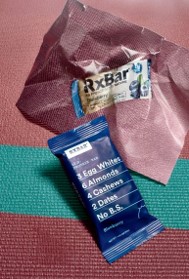 Labeling and package design are more important than ever as brand loyalty is decreasing and impulse purchases are increasing. People standing in the aisle or sitting at the computer can look at all of the competition in one place. We are all guilty of picking up the “pretty” products because they naturally appeal to our senses. Now is the time to ensure your product is that product!
Labeling and package design are more important than ever as brand loyalty is decreasing and impulse purchases are increasing. People standing in the aisle or sitting at the computer can look at all of the competition in one place. We are all guilty of picking up the “pretty” products because they naturally appeal to our senses. Now is the time to ensure your product is that product!
A classic example of the effectiveness of packaging is the RxBar. When the two 25-year-old founders created the original packaging in Microsoft PowerPoint, the brand was unrecognizable. After a complete package redesign, the exact same recipe rose to become the third-best-selling wellness bar. The only change was in the packaging.
- The power of FREE
Free stuff? Where? How much can I take? People like free. You can take advantage of consumers’ love of free by giving out samples. Selling a product is a lot easier if people know they like it. Building a strong sampling campaign in stores can be a great way to enter the market, especially for food and beverage brands.
As many as 73% of consumers said a free sample of a new product would persuade them to purchase the item, according to data from Sampling Effectiveness Advisors.
- Trade promotions
With 76% of purchasing decisions made in-store, now is the time to invest in targeting the majority of consumers who buy on impulse. Whether they exist as displays, sales, or simply prime property, trade promotions can trigger that sudden “grab and throw in the cart” behavior.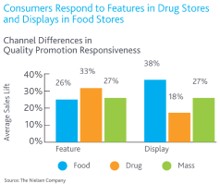
A study by Nielsen demonstrates the power of displays and features. Sales lifts ranged from 18% to 38% for displays, depending on the industry. Features brought more success, ranging from a 26% to 33% increase in sales lift.
Trade promotions can also increase brand recognition for future opportunities. When customers see a brand repeatedly, they are more likely to try it. Getting into the heads of consumers is key at this time in retail.
- Know your shelves everywhere, at all times
This is arguably the most important tip of all time. We searched deep in the depths of consumer goods wisdom and dug up the answer to all problems (okay, maybe that was an exaggeration). However, because the majority of shopping decisions are made at the shelf, it is an increasingly important tip to follow.
According to Forbes, “The store has become a must-win battleground.” It is more important than ever to have real-time visibility of your product on the shelves of every store. Is it there? Does it look how it is meant to? Is the pricing right? Are the promos all there? You may be surprised how often the answer to these questions is “no.” When that happens, the expense of slotting fees and promotions is completely wasted, with no brand recognition or sales generated.
Thanks for tuning in to our ultra-secret list of tips. To ensure your marketing investments are giving you the best ROI, speak with the Observa team to see how we can help!
